I can draw with light. A couple of days after receiving the OnePlus 10 Pro 5G , a solid if not entirely exciting Android smartphone that o...
I can draw with light.
A couple of days after receiving the OnePlus 10 Pro 5G, a solid if not entirely exciting Android smartphone that offers Pro-level features at a flagship price, I started digging into the camera app's features.
I've long been a OnePlus fan and its big camera swings. It was the first smartphone I ever used, for instance, to offer macro photography. I loved taking close-up photos of the inside of flowers, bugs, and drops of water. Not everyone loved it, though and the OnePlus 10 Pro does not include a macro camera. It does, however, have Long Exposure.
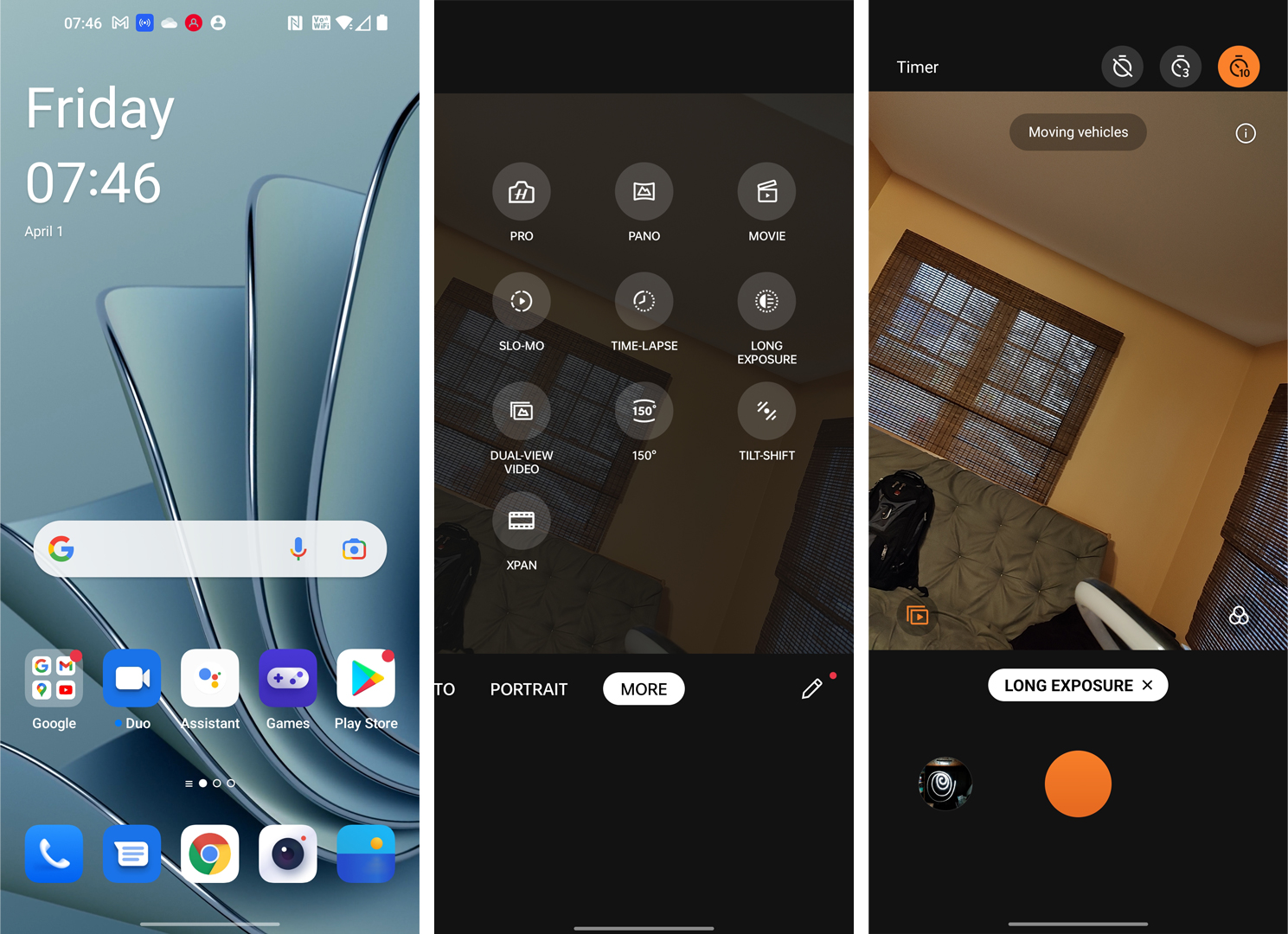
Most smartphones now offer some form of night photography or long exposure settings after Google launched the trend in 2018 with Night Sight on its Pixel 3. Today's wide variety of long-exposure, night-shooting options includes presets and, sometimes, some level of control to extend the exposure (more if you put the phone on a tripod).
Previous OnePlus phones would let you create long exposure shots by adjusting the manual camera settings (shutter speed, ISO). The OnePlus 10 Pro 5G makes the shot style a preset (slightly hidden under the Camera app's More menu).
While I'm happy to use manual settings to try and capture stars (I do a lot of DSLR photography), I do love when smartphone makers combine the best they can offer in lens and sensors with software and algorithms to make what would normally be complicated simple.
And, if I'm being honest, I've been trying to capture certain types of long-exposure shots on every single smartphone I've tested for the last few years, with varying degrees of success.
Here's what I want: streets with nothing but car lights whizzing by. People blurred as they walk past me while the rest of the world is still. Light art.
With the OnePlus 10 Pro Long Exposure setting, I accomplished all three.
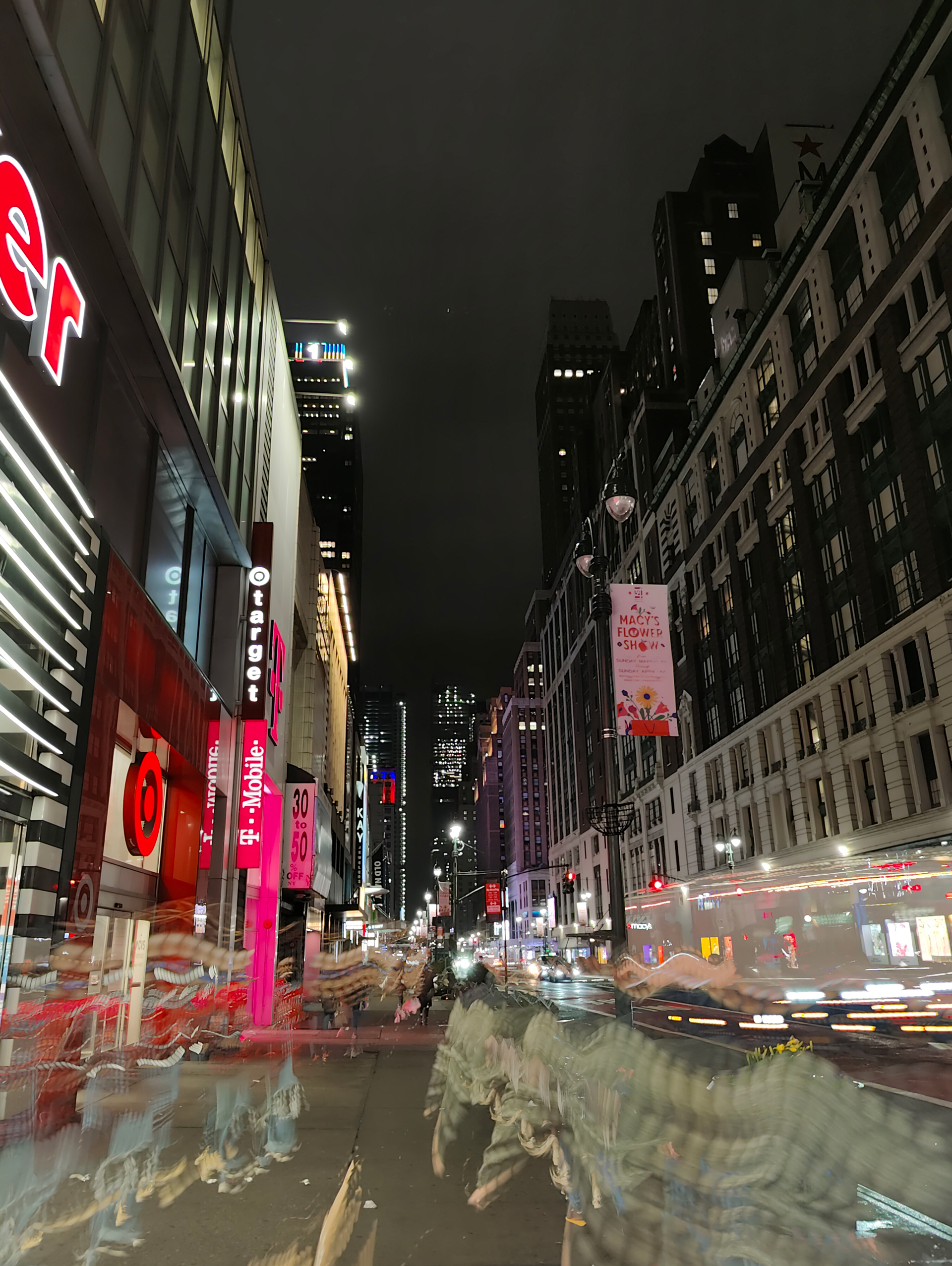
As I mentioned, the setting is easy enough to find, but what's more impressive is that it's dead simple to use (and also limited for that same reason).
You don't get to choose the lens or magnification. The default is the 48MP main camera, which as far as I'm concerned, is fine.
You also can't choose the length of the exposure. It defaults to 5 seconds. I know, that doesn't sound like a lot, and I had no illusions about capturing the stars rotating overhead at night. That said, a lot can happen in five seconds and I hoped I could capture it all in images.
I could think of no better place to test this theory than on the busy streets of Manhattan at night.
Five seconds isn't much time but it is enough for your hands and body to shake or move. To capture the action, I had to stop, plant my feet and hold steady. I don't recall if I held my breath or exhaled slowly.
I started by pointing the camera at other nighttime commuters rushing toward me. In the unedited shot above, they've all turned into ethereal ghost-like blurs barely people. Still, the effect is mesmerizing.
Next, I aimed the OnePlus 10 Pro at traffic. For these shots, I stood on the sidewalk near the street and, in one instance, leaned on a pole to steady myself further. Looking for more traffic, I headed to an intersection. Five years ago, I couldn't imagine capturing these kinds of images with a smartphone camera.
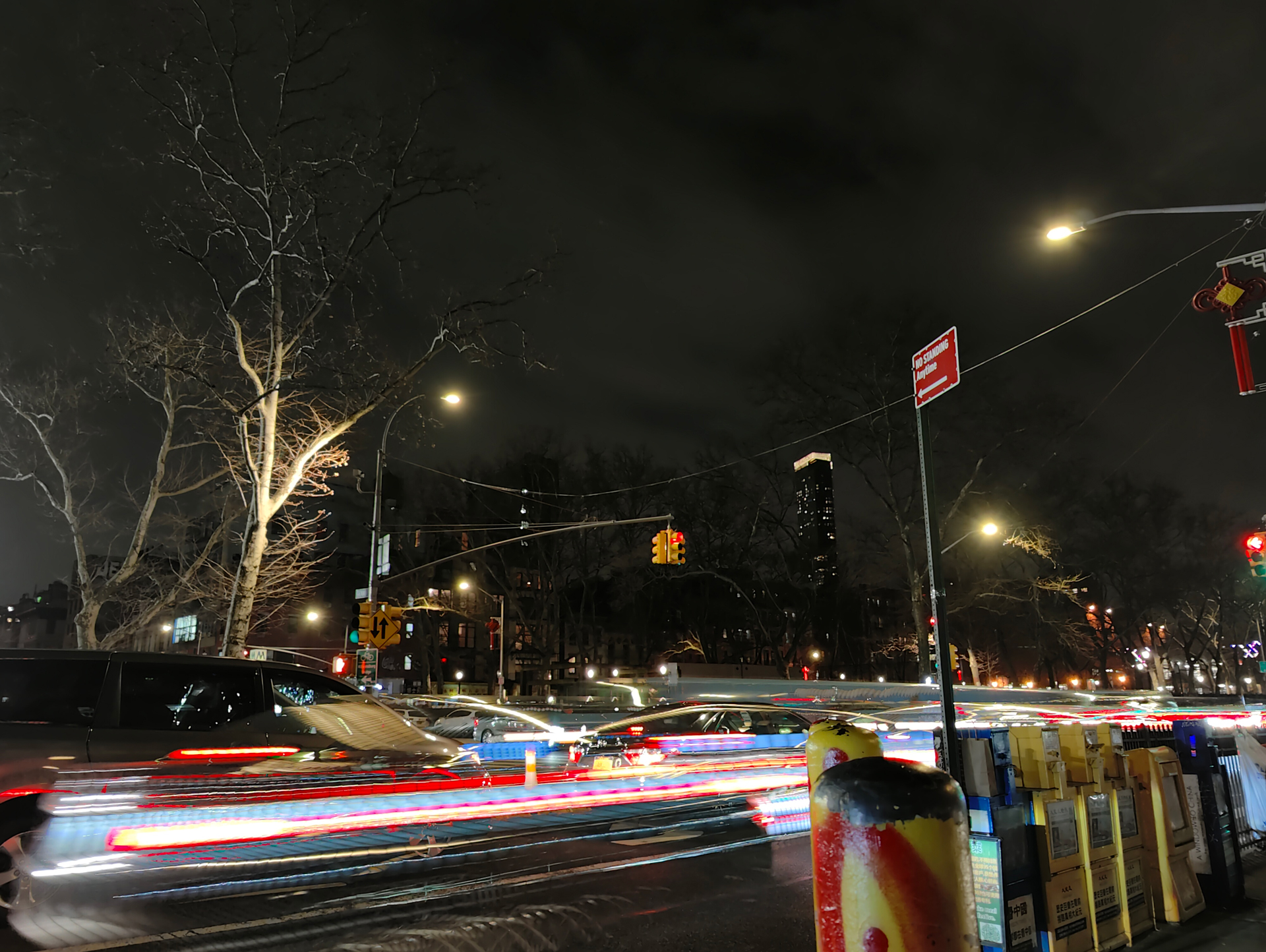
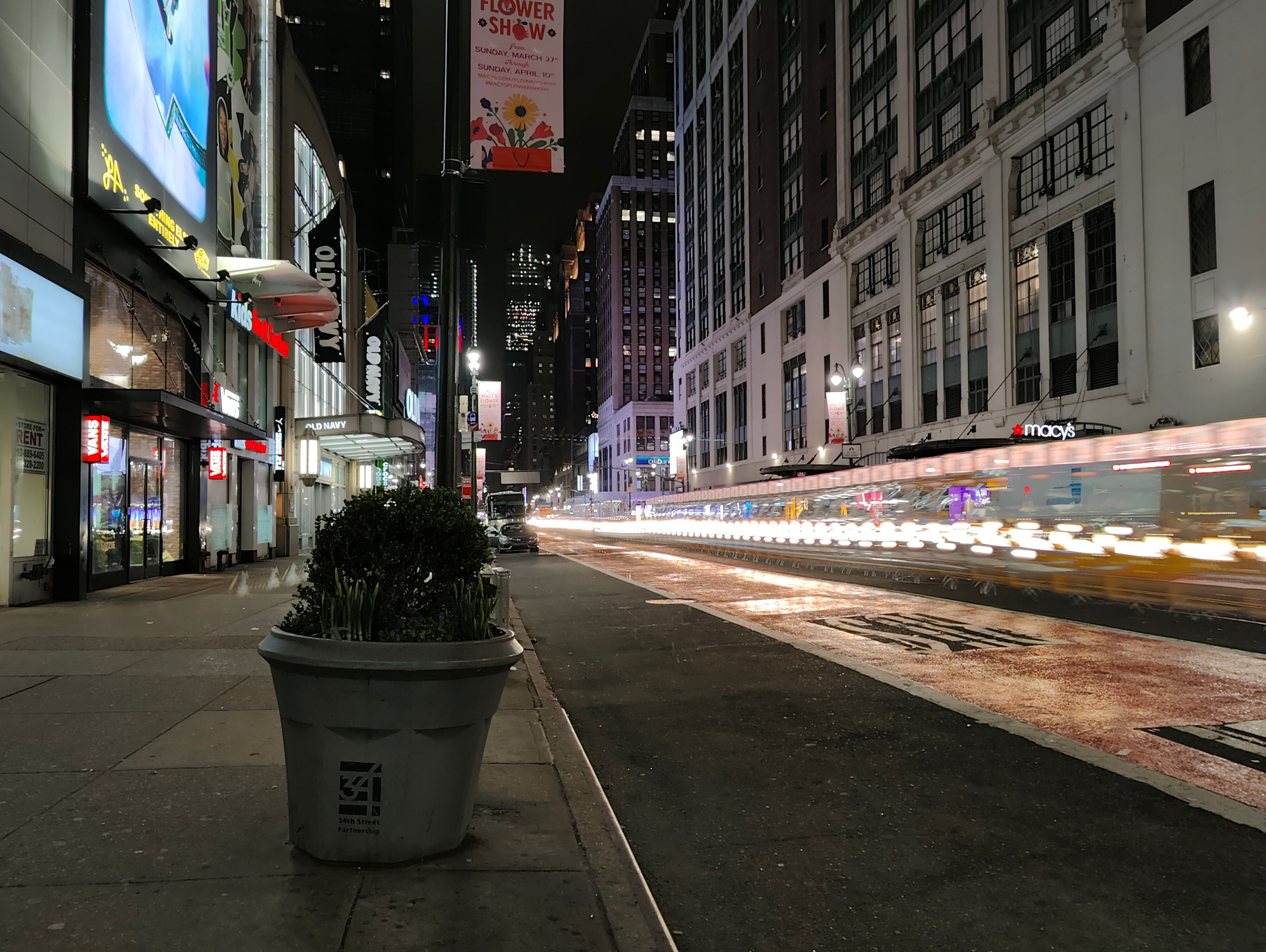
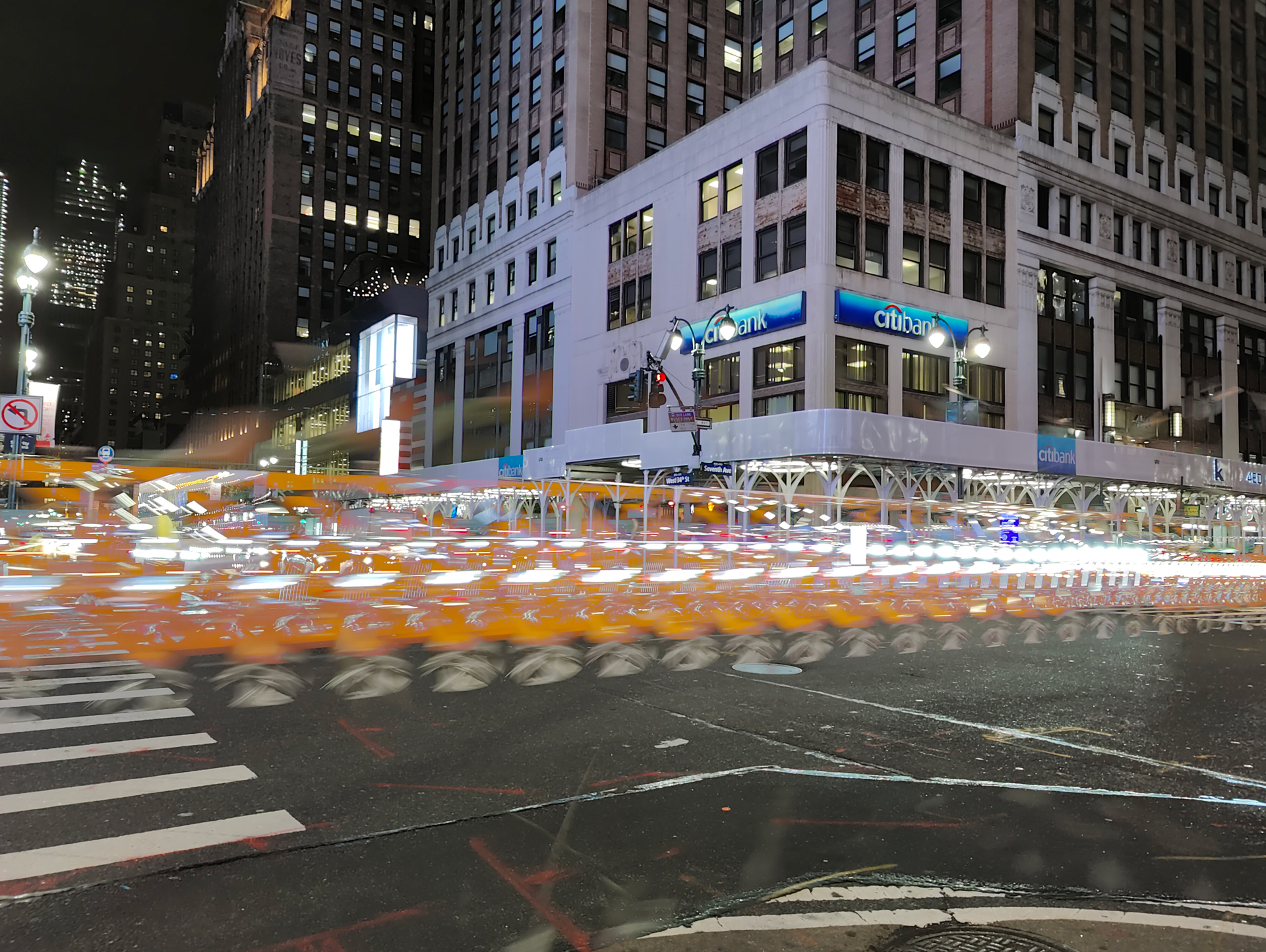
I tried some other experimentation. At a party with a lot of wall and party lights, I tried sweeping the phone by them and up from partygoers to the lights. I would say the results are intriguing and arty, though not entirely useful.
As I mentioned, you don't need a tripod to capture these images, but using one introduces another cool photographic possibility.
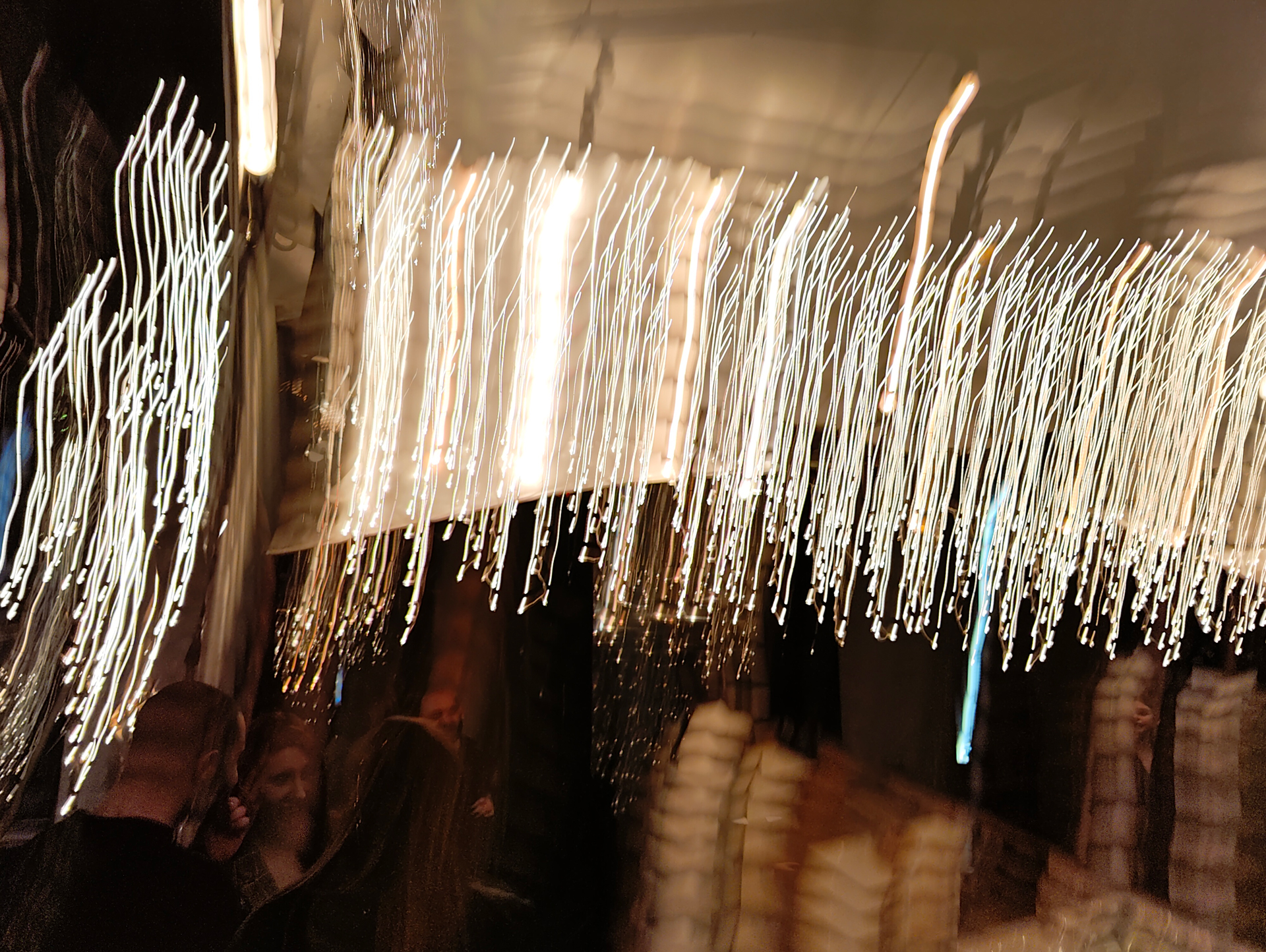
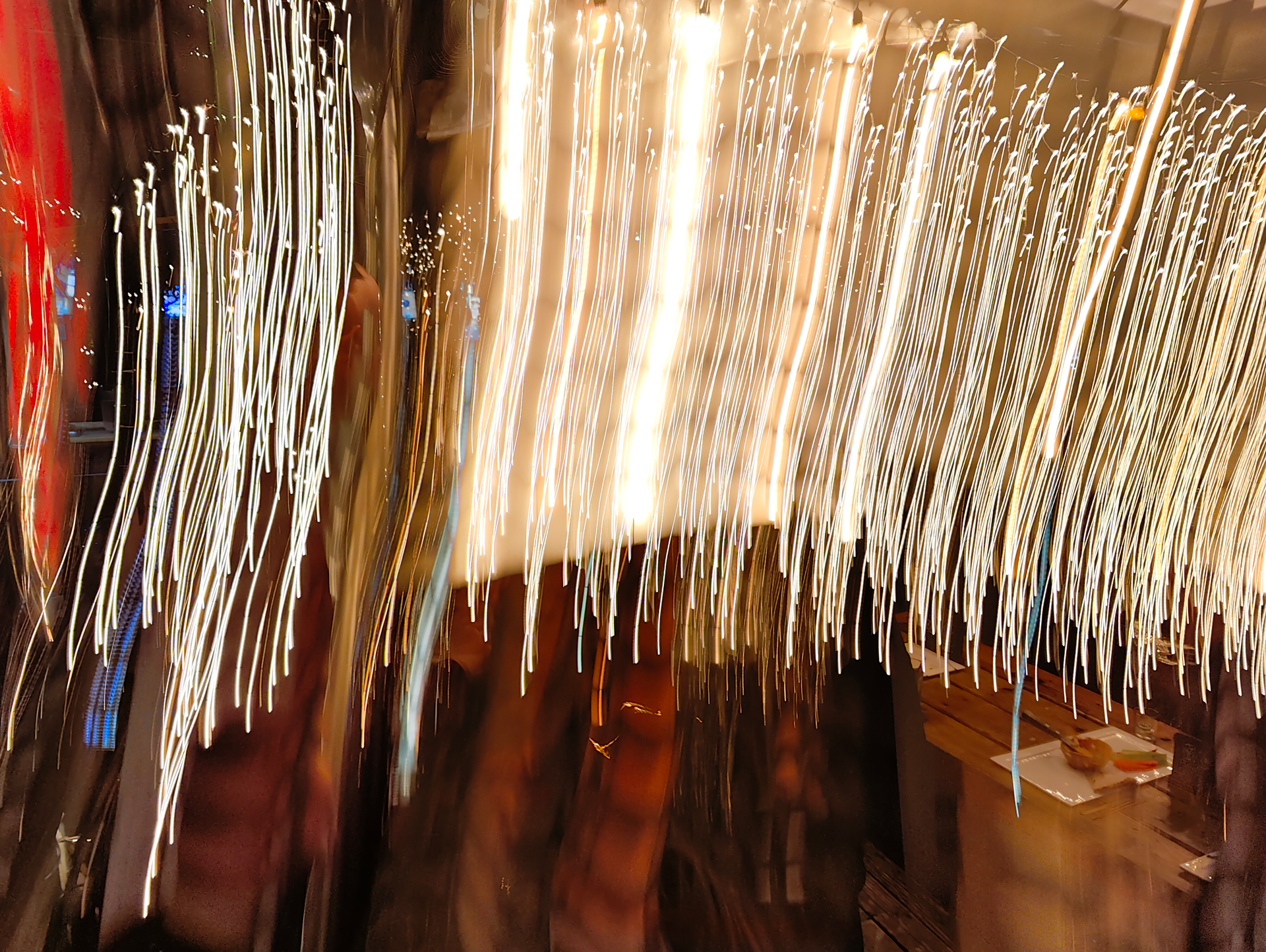
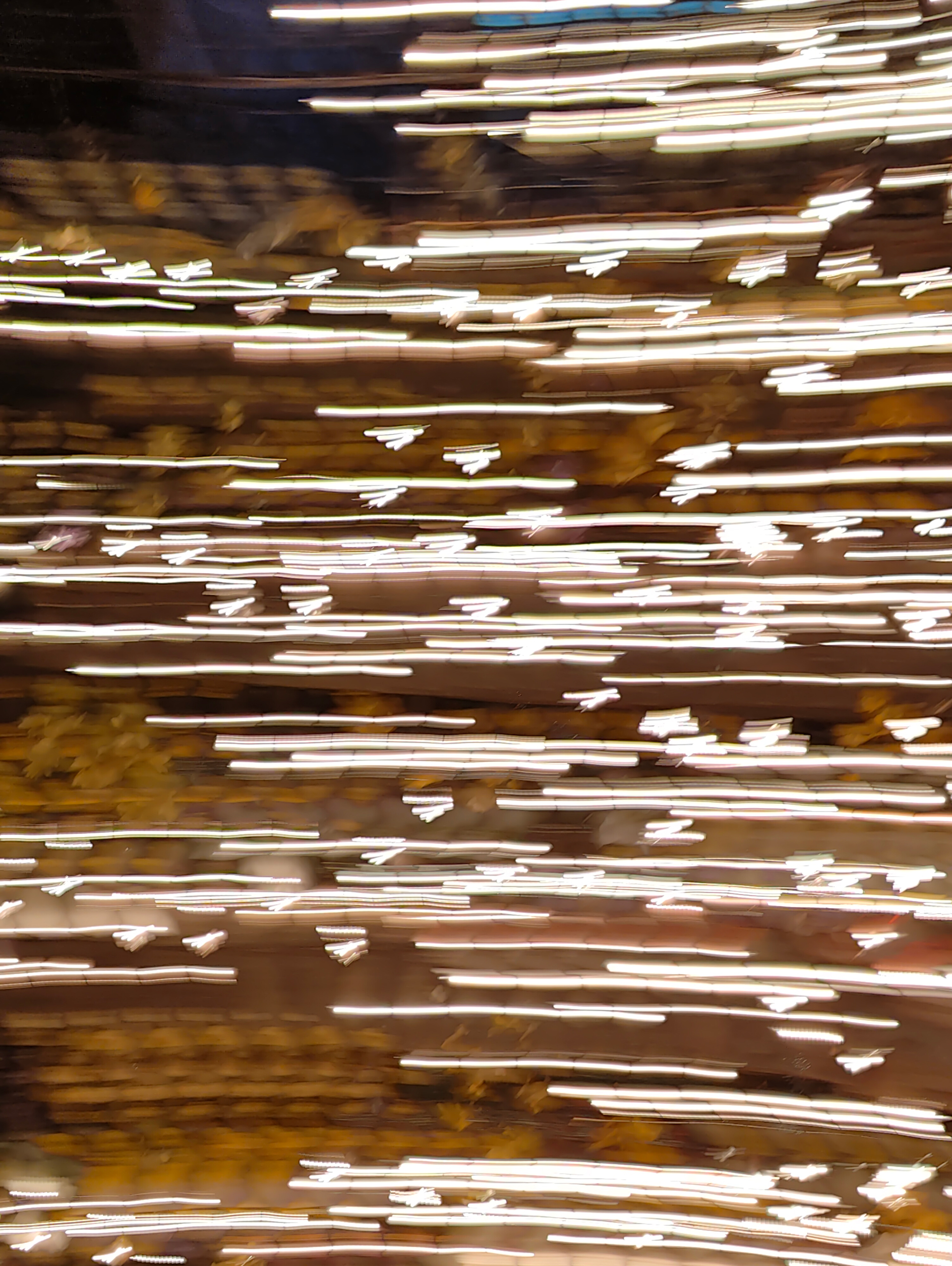
The next morning, I grabbed a tripod, another smartphone, and the OnePlus 10 Pro and headed to my dark basement. I placed the OnePlus 10 Pro on the tripod and turned on the flashlight on my iPhone 13 Pro.
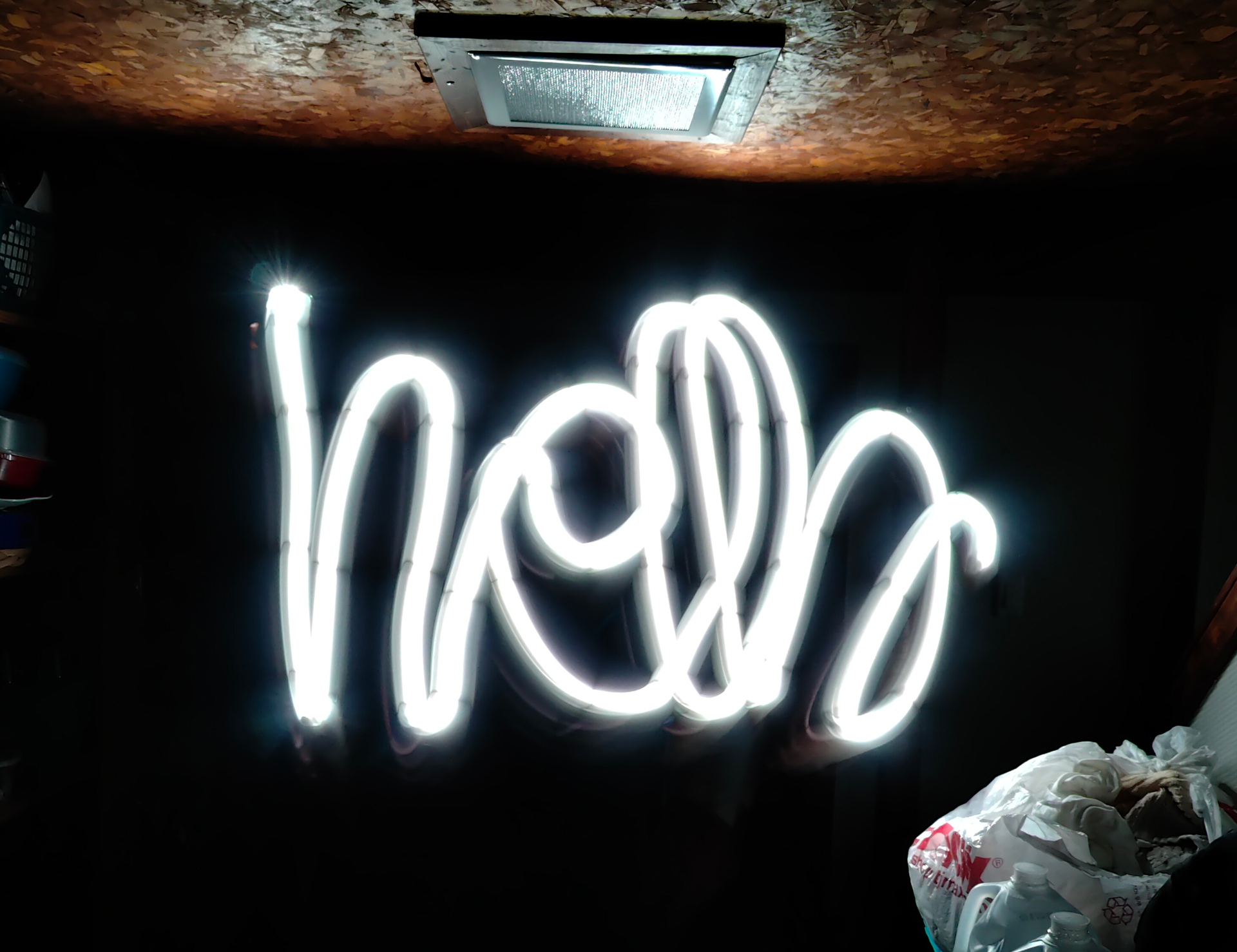
I set the timer on the OnePlus to 10 seconds and then ran to stand in front of the camera. I could hear the OnePlus10 Pro counting down 10 seconds, but unlike an iPhone, it doesn't flash the rear LED light to show you it's counting down. That was a bit annoying.
My goal was to move the iPhone as quickly as possible, with the hope that the OnePlus's Long Exposure would capture the full-light trail.
I figured out how to write "hello" backward and when the countdown ended, I quickly scripted it out. The results are not bad at all (I did crop the image a bit).
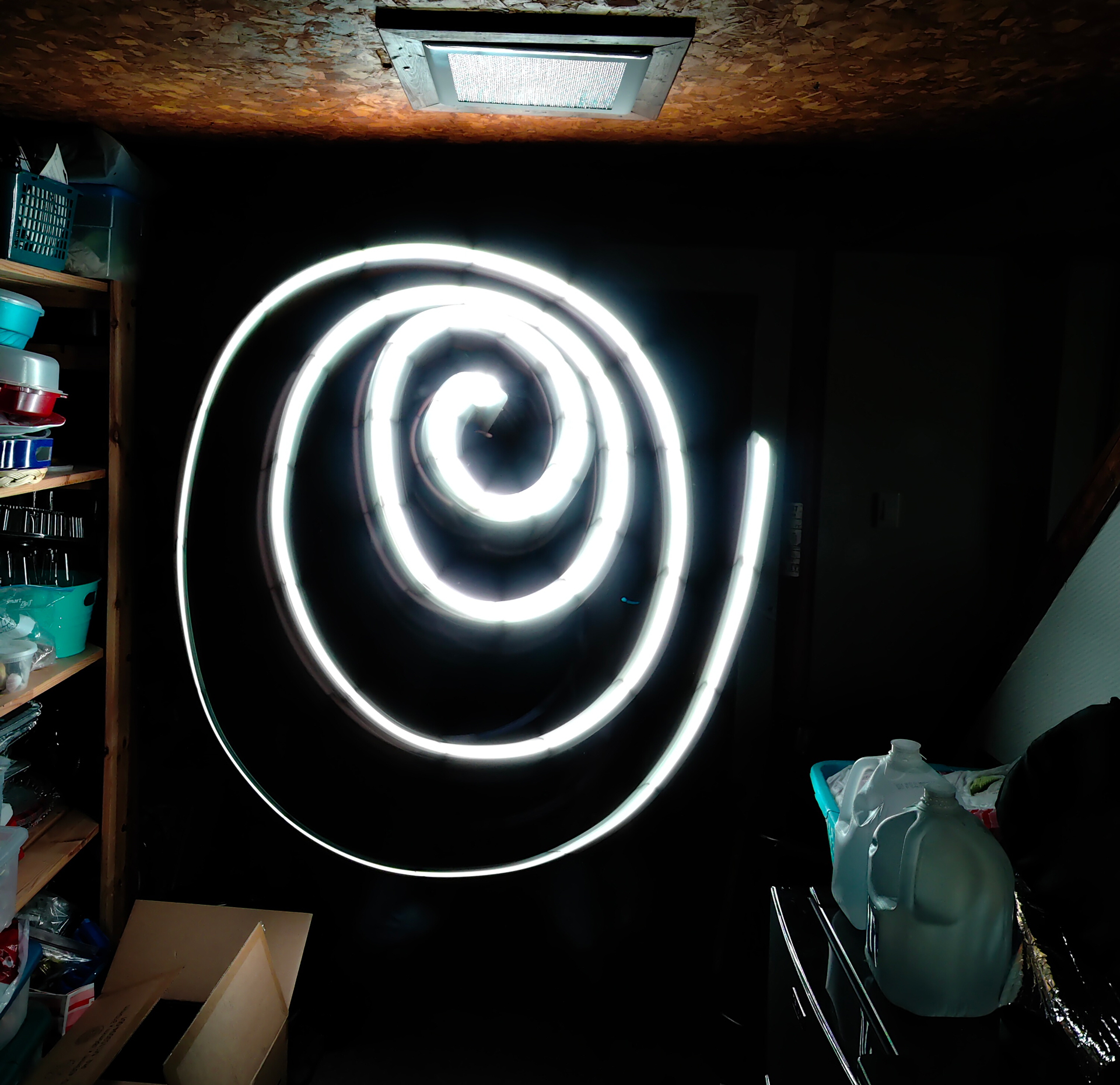
Next, I made a spiral. That was lovely, too. Next time, I'll use a different colored light.
If I have one broad criticism of OnePlus Pro 10 5G's Long Exposure preset, it's that the image processing appears to be doing multiple long exposures and compiling them into one image. You can see this in how the light breaks at regular intervals in the spiral or in how the car lights appear to almost stutter their way through. I hope future software updates smooth this out a bit.
I can, of course, dive into Pro mode and open the shutter for up to 32 seconds. That also means adjusting the ISO and focus, however. For consumers, this Long Exposure preset is just enough and they should be able to create their own wild images with a minimum of fuss.
from TechRadar - All the latest technology news https://ift.tt/FuTGbZH
via IFTTT








COMMENTS